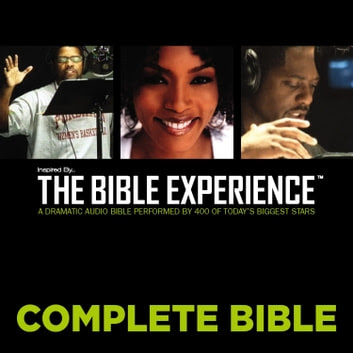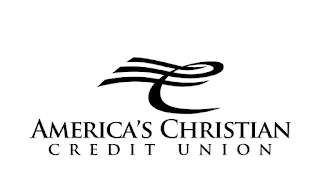here is the link to buy the paper and ink physical book
Now for the block quote:
"Witness List
St. Matthew. In this chapter I recall Matthew to the stand. Matthew’s description is found in chapter six.
St. John the Apostle. In this chapter I recall John to the stand. John’s description is found in chapter five.
St. Paul. In this chapter I recall Paul to the stand. Paul’s description is found in chapter four.
St. Peter (1st century A.D.). Peter was an apostle famous for defending Jesus on the night of his betrayal, but then denying him soon thereafter. Peter was an eyewitness to the empty tomb as well as to the resurrected Jesus.
St. Mark (1st century A.D.). Mark was an early Christian missionary, serving for a time with Paul and Barnabas. The early church recorded that Mark (also known as John Mark) wrote his Gospel from information he received from Peter while in Rome.
St. Luke (1st century A.D.). Luke was a first-century physician and a missionary companion of Paul’s. He talked to a number of eyewitnesses to the events around Jesus’ life, death and resurrection, as well as the early historical events surrounding the church.
Polycarp (A.D. c. 70–c. 156). One of the early church martyrs who died for his belief in the resurrected Christ is Polycarp, the second bishop of the church at Smyrna (modern-day Turkey). We know of Polycarp through letters written by him and to him, early narratives written about him (by Irenaeus and the early church historian Eusebius), as well as the detailed account of his death, The Martyrdom of Polycarp.
Titus Flavius Josephus (A.D. 37–c. 100). Josephus was a Jewish military leader in Jerusalem’s first-century rebellion against Rome. After capture, he became a loyal Roman subject composing, among other things, a history of the Jews.
Publius (or Gaius) Cornelius Tacitus (A.D. 56–117). Tacitus was a Roman senator and a historian. Among his writings are histories of his day.
Gaius Suetonius Tranquillus (A.D. c. 70–post 130). Suetonius served as director of the Imperial Archives under the Roman emperor Trajan, who ruled from 98 to 117. Later, Suetonius was the personal secretary to the Roman emperor Hadrian (119–121). During this time he wrote a history of the lives of the Caesars, finishing it around A.D. 119.
Gaius Plinius Caecilius Secundus, better known as Pliny the Younger (A.D. 61–c. 112). Pliny the Younger was a lawyer, author and Roman magistrate. As part of his professional duties, he wrote a number of letters that have survived to this day.
Charles Colson (1931–2012). Chuck Colson served President Richard Nixon as special counsel and admitted guilt associated with the Watergate break-in, serving a seven-month prison sentence. After his crime Colson converted to Christianity and became a well-known Christian leader and cultural commentator.
In this chapter I want to subject the resurrection of Christ to the rigors and standards of the judicial system and see what reasonable conclusion is best drawn from the evidence. As best as I can, I want to determine what happened to Jesus of Nazareth. Before doing so, I am going to set out certain important legal concepts and rules for guiding jury decisions. These rules are designed to eliminate jury mistakes in the jury’s role as the “finder of facts.”
Trial Rules and Principles
Juries are charged with making their decisions based on evidence. Direct evidence comes mainly from witnesses and documents. Additionally, juries are allowed to look at circumstantial evidence, which is evidence that is reasonably inferred from the facts. As we look at the principles associated with juries and the evidence they consider, I should emphasize that there is more than we can put into one chapter. Still, the following is a good core overview of what is built into the jury system to make it arguably the most effective determiner of historical fact in civilization.
Witnesses: Credibility. Some of the witnesses are fact witnesses, which means they actually saw or witnessed something relevant firsthand. Other witnesses are experts who are generally paid to give their expert opinion on a matter that is better understood with specialized information not readily known by the common person. The jury is charged with the responsibility of determining the credibility of witnesses.
The determination of credibility can entail many things.1 Among the important indications of credibility are
• The mental condition of the witness. A mentally unstable or challenged witness is generally less likely to be accorded credibility. Jurors will look for witnesses who seem convinced of their testimony, who will look the jurors in the eyes, who are ready and willing to give their testimony without fear of it being heard or documented. Some witnesses are determined mentally challenged to such a degree that they are not allowed to testify.
• The witness’s motives. For some witnesses the motive may be as simple as telling the truth. For others, especially expert witnesses, there is often an economic consideration. Some witnesses are paid for their testimony, which typically detracts from its credibility. Similarly, some witnesses have a personal stake in the outcome (e.g., a defendant who might have to go to jail, a plaintiff who might win money or a defendant who might lose money).
• Comparison of different witness accounts. Frequently, juries are faced with multiple witness accounts to the same set of facts. In that circumstance credibility often hinges, at least in part, on the relative merits of one person’s testimony versus that of another. A weighing process can be involved, and when four witnesses agree on some issue or another, each witness’s credibility is enhanced by the testimony of the others.
• The character of the witness. This is a very powerful influence in the credibility decision of jurors. So much so that there are very strict rules about what character evidence can be offered about witnesses. For example, if a witness has a reputation for dishonesty and there is evidence of such, then certain rules apply as to how and where that testimony can be offered. Clearly, a pathological liar will have less credibility over against an honest witness.
Witnesses: Hearsay testimony. As a general rule, fact witnesses are only allowed to testify to what they witnessed firsthand. The idea that a witness might say “John told me that he saw ABC” is not deemed testimony that ABC happened. It is merely testimony that someone else said he or she saw ABC. In courtroom vernacular this is called hearsay, which is when a witness asserts that what he or she “heard said” (the root of “hearsay”) accurately related certain facts. Courts have recognized that once the factual examination includes statements of what others have said, a second layer of remoteness affects the strength of the comment. There are numerous exceptions to the inadmissibility of hearsay, often based on whether the original speaker (“the declarant”) is available to offer the testimony firsthand. For example, if the first speaker is not available to testify, then the statements of that speaker are admissible to a jury if they were given in another trial or proceeding, or if the declarant thought his or her death was imminent in some way related to the statements. Very importantly, if the first speaker’s statements are contrary to his or her healthful pursuit of life (including effects to one’s economics, liberty, etc.), then the hearsay comments are admissible.
Expert witnesses: Junk science. Experts, generally paid witnesses in a case hired by one side or another, are allowed to testify to opinions arising from the expert’s particular knowledge, skill, experience, training or education. These opinions are allowed before a jury if based on sufficient facts or data, and if reliable principles and methods are applied to those facts to justify the opinions. This is the Daubert rule discussed in the preface. Courts have continually refined this rule to make certain that jurors are not handed junk science, the term applied to far-reaching opinions that have no real basis in reality. In a trial the judge is the gatekeeper of whether an expert’s testimony is both relevant and adequately based on science. There are multiple factors the court considers in making this determination. The core concern is whether experts have an economic motive behind their opinions, which might move some beyond the realm of what is reasonably real and into the realm of the speculative.
Bias, sympathy and prejudice. Jurors are instructed not to make decisions based on bias, sympathy or prejudice. In fact, those whose biases, sympathies or prejudices are deemed too strong to be set aside are removed from consideration for serving on a jury.
Burden of proof. No trial is conducted based on the idea that jurors can be 100 percent certain of the facts. Determining the past is not a scientific or mathematical matter like determining whether the Pythagorean theorem is right in claiming A2 + B2 = C2. Math and science have a certainty that comes from dealing with truths of the universe’s physical laws. That is not the same as determining historical truths. As I have already noted, there is always the miniscule chance that reality as we see it is not real (e.g., we are dreaming or in a computer program). To seek a mathematical proof for the reality of a historical fact is like using a liquid form of measurement to determine distance. It is senseless to say “my house is three gallons from the store” or “I drank two miles of water.” Similarly, it is senseless to talk of proving a historical event by mathematics or laboratory experiments.
The courtroom determines historical fact using the “burden of proof.” One side or another has an obligation or burden to prove something as true or false. That burden fluctuates, depending on the matters in controversy. If the issue is a criminal matter, where someone’s liberty will be stripped away by a contrary finding, then the burden of proof is “beyond a reasonable doubt.” The approach is that we cannot strip away a person’s life or liberty unless the finder of fact is convinced of the truth of a case “beyond a reasonable doubt.”
In civil cases—for example, where person A brings a claim against person B for driving while drunk, causing a wreck and injuring person A—the party required to prove their case must do so by “the preponderance of the evidence.” This means that the question for the jury in finding facts is simply “what is more likely than not?” These burdens are important aspects of jury trials because 100 percent certainty is never reachable in any case. It simply is not an option in historical fact reconstruction.
Certainly, there are other factors that have been left out of this consideration. Jurors are generally listening to advocates who present opposing sides to a historical situation. Although there are exceptions, jurors are generally not allowed to question witnesses themselves. Trials do not even occur until there has been a time of “discovery” in which witnesses are examined to see what they have to say, facts are uncovered and documents are examined. This is when expert witnesses are retained and where arguments are marshaled for presentation.
Armed with these factors, I can now turn to the resurrection of Jesus, asking, What really happened? This is the most important finding of fact right we will face. So, let’s consider the question with civilization’s best tools.
The Resurrection of Jesus
The witnesses to the death and resurrection of Christ are numerous. I will place them in categories as we consider the main points of their testimony.
Direct eyewitnesses. Matthew. The writer of the First Gospel was an apostle, one of Jesus’ select Twelve. Originally a tax collector, a job that required not only writing skills but also careful and good record keeping, Matthew was called by Jesus from the tax collector’s booth to be one of his disciples. The details of this calling are given only in Matthew’s Gospel (Mt 9:9). Matthew’s Gospel records Jesus’ crucifixion, death, burial in the tomb of Joseph of Arimathea, the Roman guard at the tomb, the earthquake and the resurrection. The resurrection account includes the direct testimony of two women (Mary of Magdalene and a second woman named Mary) about what they saw and their inspection of the tomb. It also includes an apparently common explanation why the body of Jesus was missing from the tomb: the Jewish elders gave money to the soldiers to tell people that his disciples stole the body (Mt 28:11-15).
John. Along with his brother James, John was a fisherman who was called to leave his nets and follow Jesus (Mt 4:21-22). His account, the Fourth Gospel, details Jesus’ last speech to his apostles, in which Jesus explained he was leaving but assured them he would return. John repeats the prayer Jesus offered in Gethsemane before his arrest, where Jesus affirmed his preexistence with God, his mission on earth and his oneness with God the Father. John then details the betrayal and arrest of Jesus, the confrontation with the Jewish authorities, the denial of Peter, the trial of Jesus before Pilate and the crucifixion. John very carefully explains that Jesus died on the cross, with nail holes in his hands and feet and a spear thrust into his side. John tells of the role of Joseph of Arimathea as well as the Jewish ruler Nicodemus in the burial of Jesus in Joseph’s tomb. John attests to the empty tomb by Mary Magdalene, the follow-up tomb inspection by Peter and, most scholars accord, by John himself (he does not call himself John but “the other disciple, the one whom Jesus loved”). Peter and the other disciple saw the burial clothes and the otherwise empty tomb. John records visits of the resurrected Jesus to Mary Magdalene and the disciples. John also records the encounter between the resurrected Jesus and the apostle Thomas, at which time Thomas at first doubted, wanting to see and touch Jesus and his wounds. Once the resurrected Jesus offered Thomas that very opportunity, Thomas’s doubts immediately disappeared. Jesus made subsequent postresurrection appearances documented by John, including one where Jesus cooked and ate a fish-and-bread breakfast with his disciples on the shore of the Sea of Galilee. Jesus prophesied that Peter would die by crucifixion and that John would be the last living apostle.
Paul. An eyewitness of a different sort, Paul was raised in a devout Jewish home, was one of the Jewish elite (educated in the highest and best Jewish academic environment), was fluent in at least Hebrew, Aramaic and Greek, knew Greek poetry, was a multigenerational Roman citizen conversant with Roman law, and was a zealot among his people, living above reproach by Jewish law and tradition. Paul was part of the Jewish power structure that was violently against the church, seeking to arrest and, if need be, kill those who were trumpeting Jesus as a resurrected Messiah. A follower of Jesus named Stephen, the first known martyr of the Christian faith, was stoned under Paul’s approval (he held the cloaks of those involved). While Paul was on a zealous crusade ravaging the church, hauling both men and women to prison, he had an encounter with the risen Jesus while on the road to Damascus. Jesus identified himself to Paul and instructed him on what to do to resolve the blindness Paul suffered as a result of this encounter. Paul almost immediately began preaching Jesus as the risen Messiah, recounting his encounter with the risen Jesus multiple times. Throughout much of the Mediterranean world Paul proclaimed that God had raised Jesus from the dead (Acts 17:31). In his writings to the Corinthians, Paul specifies that “Christ died for our sins in accordance with the Scriptures, that he was buried, that he was raised on the third day in accordance with the Scriptures, and that he appeared to [Peter], then to the twelve” (1 Cor 15:3-5). Paul adds that the resurrected Christ appeared to over five hundred disciples at one time, with most of them still alive lest anyone should want to check. Finally, Paul affirmed that the resurrected Jesus appeared to Jesus’ brother James and to Paul.
Peter. Like John, Peter was a fisherman called to follow Jesus. After Jesus’ arrest, for fear of his own safety Peter denied being Jesus’ associate three times in rapid succession. Ultimately, according to the Gospel writers, Peter not only encountered the empty tomb but also the risen Jesus. In one of his own writings, Peter spoke of the resurrected Jesus as “a lamb without blemish or spot. He was foreknown before the foundation of the world but was made manifest in the last times for the sake of you who through him are believers in God, who raised him from the dead and gave him glory, so that your faith and hope are in God” (1 Pet 1:19-21). Peter also wrote of his assurance that the resurrected Jesus would return with a new heaven and a new earth (2 Pet 3).
Secondary witnesses. Mark. According to historical records of the church, the missionary Mark, who worked under Paul, Barnabas and Peter, penned the Second Gospel (the Gospel of Mark). Early historical church records report that Mark received his Gospel information from Peter. That would make Mark’s Gospel hearsay in legal theory, which means it would not be admissible in a court absent certain indications of reliability. Saving admissibility issues for later, I note now that Mark’s account does confirm the crucifixion and death of Jesus. He also details the burial and involvement by Joseph of Arimathea. Mark recorded that on the Sunday following the crucifixion Mary Magdalene and Mary the mother of James found the tomb empty. An angel informed both women that Jesus was resurrected. The earliest copies of Mark’s account end there. Later copies include appearances of Jesus to Mary, to two disciples and also to the entire group of eleven remaining disciples.
Luke. Luke wrote the Third Gospel as well as the book of Acts. Luke was not an eyewitness of the Gospel events, but he set out to “compile a narrative” from “eyewitnesses” (Lk 1:1-2). He then set out to write “an orderly account” (v. 3), which includes the early history of the church in Acts. Periodically in the Acts narrative Luke joins Paul on mission efforts, and his writing then includes eyewitness accounts. Luke explains not only the plot to kill Jesus but the events that led up to the crucifixion. Luke recounts the drama before the actual crucifixion, including the difficulties carrying the cross to the site of Jesus’ death. In addition to Jesus’ death, Luke adds the burial by Joseph of Arimathea, providing details about Joseph’s role as a member of the Jewish council and his objection to the killing of Jesus. Luke details the story of the women coming to the tomb and finding Jesus’ body missing. He adds to Peter’s investigation of the empty tomb his discovery of Jesus’ linen clothes. Luke gives many more details than the other Gospel writers about Jesus’ postresurrection appearances, including walking with two disciples on the road to Emmaus, showing the disciples in Jerusalem his wounds and eating some broiled fish the disciples had with them. At the end of that encounter, Jesus explained to the disciples the Old Testament’s teaching about his death and resurrection. He finished with the assurance they would receive the Holy Spirit. Luke ends with Jesus’ ascension into heaven (see Lk 24).
Note that Luke identifies his sources for those who might want to confirm the accounts. Luke, for example, not only identifies Matthew’s two women witnesses but adds another element, “the other women.” And while Matthew identifies the two women as Mary Magdalene and “the other Mary,” Luke says, “Mary Magdalene and Joanna and Mary the mother of James.”
Early church martyrs. There are many other witnesses relevant to Jesus’ death and resurrection, including a group of early church martyrs. These people gladly laid down their lives, convinced that Jesus, the resurrected Messiah, assured them of the reality of God, of sin, of atonement and of a better life after this one is over.
While I could list enough of these witnesses to create a separate book simply with their testimony, I present only one to see the ancient accounting of this witness’s words and actions. My exemplar witness is Polycarp, whose martyrdom is set forth in The Martyrdom of Polycarp.2
Because Polycarp was wanted for his faith and was a leader of the church, the believing community hid him in the countryside. Those searching for Polycarp found two slave boys that, after being tortured, told the authorities where Polycarp was hidden (6.1). So the mounted police and horsemen set out to find and arrest this old Christian man. Polycarp had enough warning to escape, but opted to stay, saying, “May God’s will be done” (7.1).
Upon hearing that the police had arrived, Polycarp started visiting with them. Those present were amazed not only at his advanced age but also at his composure in the face of what was to come. Polycarp ordered that his captors be given the supper they must have missed by chasing him at that hour. Polycarp also asked his captors for permission to pray for an hour before they left. The captors agreed, and to everyone’s wonder, he stood for two hours, praying out loud for everyone “who had ever come into contact with him” (7.2–8.1).
His captors and those with them regretted coming after “such a godly old man” (7.2), but they still took him into the city. There the police captain and his father attempted to persuade him to state “Caesar is Lord,” followed by an offering of incense. They explained that Polycarp could return to business as normal and live if he would do those two minor things. Polycarp responded, “I am not going to do what you are suggesting to me.” Then Polycarp went straightway into the stadium where the crowd noise rose so high that “no one could even be heard” (8.1-3).
Polycarp and the Christians with him heard a voice from heaven as he entered the stadium: “Be strong, Polycarp, and act like a man.” Then the proconsul asked Polycarp whether he was indeed the legendary and wanted man, which Polycarp confirmed. The proconsul then tried to persuade Polycarp to recant, urging Polycarp to “swear by the genius of Caesar.” Thinking of the Christians as atheists (for not believing in the deity of Caesar and other gods of the Roman pantheon), the proconsul asked Polycarp to say “Away with the atheists!” So Polycarp “solemnly looked at the whole crowd of lawless heathen who were in the stadium, motioned toward them with his hand, and then said, ‘Away with the atheists!’” Not quite what the magistrate intended!
The magistrate cried, “Swear the oath and I will release you; revile Christ.” To this Polycarp responded, “For eighty-six years I have been his servant, and he has done me no wrong. How can I blaspheme my King who saved me?” (9.1-3).
The proconsul kept at Polycarp with wave after wave of persuasion and offers to save his life by recanting his faith. But Polycarp never faltered. Instead, Polycarp explained, “If you vainly suppose that I will swear by the genius of Caesar, as you request, and pretend not to know who I am, listen carefully: I am a Christian. Now if you want to learn the doctrine of Christianity, name a day and give me a hearing” (10.1-2).
As the proconsul moved into the final stage of confrontation, Polycarp was filled with courage and joy, and his face was “filled with grace.” Even the proconsul was astonished. Meanwhile, the crowd itself was emphatically shouting and chanting for Polycarp’s death. The cries eventually turned into demands that Polycarp be burned (12.1-3).
As they started to nail Polycarp to the pyre, he stopped them: “Leave me as I am; for he who enables me to endure the fire will also enable me to remain on the pyre without moving, even without the sense of security you get from the nails” (13.1-3). So instead of nailing Polycarp, they tied him up. Polycarp looked to heaven and offered a prayer of praise to God testifying to God’s love through Jesus. And as Polycarp declared “Amen!” the fire was lit (15.1).
And “such is the story of the martyrdom of Polycarp” (19.1). Many everywhere spoke of his death, “even by pagans” (19.1). Early in the 200s, the Christian writer Tertullian said that the blood of the martyrs was the seed of the church. More and more people were inspired and further convinced by a faith that people would gladly die for, than by the paganism that would kill those believers.
Other witnesses. In addition to the early church writings there are historical writers like Josephus, who wrote Jewish history for the Romans. Around A.D. 93–94, Josephus wrote of the martyr James, who was identified as “the brother of Jesus, who was called Messiah [Christ].” He also said Christ was executed by Pilate. Josephus has more to say about Jesus as resurrected.
At this time there was a wise man called Jesus, and his conduct was good, and he was known to be virtuous. Many people among the Jews and the other nations became his disciples. Pilate condemned him to be crucified and to die. But those who had become his disciples did not abandon his discipleship. They reported that he appeared to them three days after his crucifixion and that he was alive. Accordingly, he was perhaps the Messiah, concerning whom the prophets have reported wonders. And the tribe of Christians, so named after him, has not disappeared to this day.3
Figure 10.1.Gaius Cornelius Tacitus (Wikimedia Commons)
In addition to Josephus other Roman historians wrote of Jesus as the subject of worship among Christians. In his Annals, penned around A.D. 116, Tacitus wrote of the July 64 mass execution by Nero (see fig. 10.1). Tacitus confirmed the death of Christ by crucifixion (“the extreme penalty”) under Pilate as arising from Nero’s efforts to distract attention from his burning of Rome:
To get rid of the report, Nero fastened the guilt and inflicted the most exquisite tortures on a class hated for their abominations, called Christians by the populace. Christus, from whom the name had its origin, suffered the extreme penalty during the reign of Tiberius at the hands of one of our procurators, Pontius Pilatus, and a most mischievous superstition, thus checked for the moment, again broke out not only in Judaea, the first source of the evil, but even in Rome, where all things hideous and shameful from every part of the world find their center and become popular.4
Even before Tacitus, another Roman, commonly called Pliny the Younger, who was both lawyer and author, served for a time as a magistrate for the Roman emperor Trajan and wrote about Jesus and Christians. In his capacity as magistrate Pliny pursued Christians for their illegal status within the empire. Pliny explains the Christian practice of meeting on “a fixed day” (which scholars readily accord would have been Sunday, the resurrection day) and partaking of a meal (the Eucharist). He adds that he made a point of following policy and executing those who would not recant.5
In his Lives of the Caesars, Suetonius, the Roman emperor’s director of the imperial archives, used those archives to write of the significant events of the empire’s Caesars. Suetonius wrote that during the reign of Claudius (41–54), the Jews in Rome were constantly having disputes over Christ, which reached an intensity level so high that Claudius expelled the Jews from Rome for some time.6 This event is also referenced in the New Testament (Acts 18:2).
Witnesses: Credibility. We do not have the ability to judge the credibility of these witnesses by looking them in the eye and focusing on their demeanor. Instead, we can examine their writings and the writings of others about them. In some ways those writings convey more relevant information on credibility than a two-hour examination might. The writings have been subject to near exhaustive analysis over the last nineteen centuries.
The mental condition of the witnesses. No scholar has produced a credible argument that these witnesses are mentally challenged or deranged. The writings of Paul, for example, are lucid and exhibit well-reasoned logic, marvelous command of language, some of history’s most moving prose (1 Cor 13), profound theology (Phil 2:5-11), knowledgeable confrontation of those with whom he disagreed (Gal 2:11-14), and more indications of mental stability and competence.
The witnesses’ motives. Not one witness among the many listed could be seen as having an economic motive for subscribing to or supporting the resurrected Christ. In fact, the opposite is true. Christianity was not supported in Judea. Early believers in the resurrected Jesus faced persecution and death at the hands of Jews. The faithful Jews, including Paul before his conversion, believed that God had sent their forefathers into exile because they tolerated gods other than the God of Moses. The idea of a resurrected Jesus who was God and Savior would only bring trouble to Judea from the hand of the true God, or so they reasoned. Were they not truly convinced, the apostles and disciples of Christ (almost all of which abandoned him at the cross) would not sanely abandon their faith for a renegade idea about a resurrected Jesus. Furthermore, if they were charlatans who trumped up the idea of a resurrection, then you would not expect Peter, who denied the Lord three times in an effort to save his skin, to stick with the hoax once he faced imprisonment and death. The stoning of Stephen alone would have likely brought a faked resurrection to an end.
Closely considering the motives of Paul, we see something striking. Paul was a “Who’s Who” among the Jews. Having studied under Gamaliel, a teacher of the Jewish law so famous that many of his sayings are extant today, Paul was in a position to lead the Jews. He cast his vote to stone Stephen (Acts 7:58; 26:9-10). Paul zealously adhered to Jewish laws. Paul lost his affluence, position, standards and practices of life, and likely his family when he converted. He certainly was convinced that something tremendous happened in Jesus.
Paul knew what he had traded for. He wrote as much to the believers in Corinth, explaining that if Christ has not been raised from the dead, then Christianity is a cruel joke (1 Cor 15:19).
History records that Paul, Peter, Thomas and most every other apostle eventually died a martyr’s death out of their deep conviction that Jesus rose from the grave. Every one of the apostles exhibited a 180-degree turn in life and lived the rest of their days adhering to faith in the living Christ. The only motive was a firm belief in the truth of the resurrection.
Does history indicate these witnesses believed for profit or fame? No. There was no profit for Paul, Peter, James, Stephen or any others associated with Jesus. Nor was there fame (at least not in their lifetime). To the contrary, it made them outcasts and cost them their positions. Paul, by his own accord, suffered “countless beatings, often near death.” Five times he received forty lashes from the Jews. Three times he was beaten with rods. Once he was stoned. Three times shipwrecked. He chose a life in “danger from robbers, danger from my own people, danger from Gentiles, danger in the city, danger in the wilderness, danger at sea, danger from false brothers; in toil and hardship, through many a sleepless night, in hunger and thirst, often without food, in cold and exposure” (2 Cor 11:26-28). He preached “free of charge” (2 Cor 11:7) and worked as a tentmaker to support himself in ministry. Finally, history records, Paul willingly died a martyr’s death at the hands of Nero rather than budge on the truth of the resurrected Jesus.
Stephen was martyred around A.D. 34 because he would not deny the truth of the resurrection (Acts 6–7). The apostle James (demarcated in the New Testament as “the brother of John”) was martyred around A.D. 44 because he would not deny the truth of the resurrection (Acts 12). A later historical record, written 125 years after James’s death by Clement of Alexandria, notes that James’s accuser listened to his confession of faith and was so moved that he became a believer and was also martyred for his faith.7 A different James in the New Testament was “the brother of Jesus” (Mk 6:3), who did not believe in Jesus during Jesus’ ministry (Jn 7:1-5). Yet after the resurrection we read of James being among the believers (Gal 1:19). James the brother of Jesus was thrown from the parapet of the temple and clubbed to death because he refused to deny the resurrected Jesus. Hegesippus, writing A.D. 170, records that James was pushed off the parapet because a number of watching Jews were moved to faith by his testimony.8 The apostle Andrew was hung on a cross for four days before finally dying. He chose the misery and impending death rather than deny the truth of the resurrection.
Did the apostles risk life and limb for the fame of starting a movement? This motive likewise fails. It is readily apparent from reading the witnesses that they all believed that Jesus was soon going to return to take them to a glorified state. Believers in Christ were selling all their goods to support the common good in light of what they thought was around the corner (Acts 2:44).
Comparison of different witnesses’ accounts. In my courtroom experience, anytime two stories are identical, there is a strong likelihood of collusion. The truth is that eyewitnesses notice different things. One may see two cars racing through an intersection while another notices a green one. That does not mean one is right and the other wrong. It means that the stories need to be combined to see if they make sense.
Much has been made over whether the biblical eyewitness accounts are consistent. On core matters they certainly are. Only on minor matters are different facts presented, none of which undermine a coherent narrative. All of the accounts include (1) the crucifixion of Jesus, (2) his death on the cross, (3) his burial in the tomb of a noteworthy citizen who could be examined for the truth, (4) his resurrection on the third day and (5) witnesses to the empty tomb. Matthew, Luke and John also name witnesses who encountered the physically resurrected Jesus.
The character of the witnesses. Honesty is a virtue, but it is not always easy to tell when it exists. There is an expression that people need to “put their money where their mouth is” to prove their conviction. This reveals honesty. Each of the eyewitnesses put more than their money where their mouth was. They gave all they had for their convictions about the resurrected Jesus.
Another way to consider the character of the witnesses comes from the circumstantial evidence (see “Opening Statement” in chap. 1). Each of the eyewitnesses lived full and real lives. They had family and friends who knew their penchant for truth telling or the lack thereof. These eyewitnesses successfully proclaimed Jesus’ resurrection to such an extent that within two decades it had spread throughout the Roman Empire, becoming a legal religion by 313 and the official religion of the empire by 380.
Witnesses: Hearsay. The testimony of Matthew, John, Paul and Peter is not hearsay. They were eyewitnesses to what they recorded and to what they said. A court would consider Mark’s and Luke’s writings hearsay.9 They were not eyewitnesses but recorded the information they received from others. Before a court would allow consideration of their testimony, it would need to meet an exception to the hearsay doctrine. Some of the testimony, however, would be accepted in a court of law. For example, testifying before King Agrippa, Paul began, “I consider myself fortunate that it is before you, King Agrippa, I am going to make my defense today” (Acts 26:2). His testimony included doing “many things in opposing the name of Jesus” (Acts 26:9), which we have looked at earlier in this chapter. This testimony of Luke, as a recorded trial, is admissible as a recorded judicial proceeding.
Of course, all the statements of the noneyewitnesses would be hearsay as statements “against interests.” At that point in history, everyone proclaiming Jesus as the resurrected Lord was doing so under threat of imprisonment or death. The stoning of Stephen bears that out.
So regarding hearsay, it is not an issue for the testimony about Jesus’ resurrection according to Matthew and Luke, and where it is, it fits into exceptions that push the testimony into a realm of reliability.
Expert witnesses: Junk science. There are no hired experts or anyone who is testifying to the resurrection for pay. However, science is an important area to consider, for some will say, “Yes, based on the eyewitness accounts there is more than sufficient evidence to believe in a resurrected Jesus, but we know that scientifically it is impossible. So there must be another explanation.”
I begin this discussion by readily admitting that absent God intervening in the laws of physics, it is not rational to believe in resurrection, anymore than we should believe two plus two is ten. The same principle that two plus two is four, however, sets the resurrection onto firm logical ground. Science says there is no resurrection by the rules of this universe. A resurrection could occur if and only if there is someone or something that can operate outside of the laws of this universe. That is true of God. God is not some molecular entity bound by matter. God is not so small. God is beyond the universe and is able to alter things in the universe. That is the only way science can allow for the resurrection. Science dictates the necessity of God’s involvement, unless all these witnesses were massively deceived and wrong.
Bias, sympathy and prejudice. Who gets to be a juror on the resurrection case? Of course, everyone does. Everyone must confront the issue of whether or not they see the hand of God in the life, death and resurrection of Christ. Even though everyone gets to be a juror, I still need to address the issue of bias, sympathy and prejudice. Because some might get disqualified from sitting on an actual jury if this were a real case in court.
Consider two different groups that would not likely be allowed on a jury. First, there might be a group that says, “I believe! I don’t care what the evidence is. I have a prejudice and bias that Jesus was resurrected. I was born into it; it is genetic. It must be the truth, and I could never examine it genuinely.” This person has a bias that would preclude jury service. That is not to say that the person is wrong. Many people can be right in their opinions but are not allowed to sit on a jury.
The second group says, “I cannot set aside my prejudice about the laws of nature. A resurrection is a functional impossibility. It doesn’t matter if fifty thousand people saw it, those fifty thousand must be deceived.” This person does not have an open mind, even to the idea that God can do what is impossible for people and molecules. These people still have to make a decision, but they are fooling themselves if they think they are making a rational one based on the evidence. They are making it based on their bias and prejudice. The evidence becomes irrelevant and not worth listening to or examining.
Burden of proof. We end with the burden of proof. As noted in the legal section, no one can be 100 percent convinced about any finding of fact in history, especially so far back in time. The question then becomes what standard of proof we would need before trusting in a conclusion that Jesus indeed suffered under Pontius Pilate, was crucified, died, was buried, descended to the dead and on the third day rose again. Is the burden of proof what is more likely than not, like a civil case? Is it beyond a reasonable doubt, like a death penalty case?
Under either burden the evidence for a resurrected Jesus is immensely compelling. We have looked at that evidence from eyewitnesses and secondary witnesses, but I have left out some of the greatest arguments. The death and resurrection of Jesus are the missing piece of the puzzle in this book. Christ’s death allows a just God to set aside the immorality and impurity of humanity and accord humanity a resurrection into perfection, just as Christ was resurrected.
This is the beauty of the finished work of Christ. His last words, “It is finished,” reflect the atoning work that the nature of God requires. Here we see not only the records and testimony of the witnesses to the resurrected Christ but the logic and meaning behind it. It was not some harebrained idea concocted by a few fishermen, a tax collector and a budding rabbi that somehow caught fire amid a dreadful and documented persecution, finally arriving three hundred years later as a legal religion. It was the facts—no more and no less. It was prophesied for centuries in Scripture, and it was fulfilled in history.
Was the Missing Body of Jesus and the Following Testimony One Big Conspiracy?
Charles Colson, the assistant to President Richard Nixon who was convicted in the Watergate scandal, writes:
Watergate involved a conspiracy perpetuated by the closest aides to the president of the United States—the most powerful men in America, who were intensely loyal to their president. But one of them, John Dean, turned state’s evidence, that is, testified against Nixon, as he put it, “to save his own skin”—and he did so only two weeks after informing the president about what was really going on—two weeks! The cover-up, the lie, could only be held together for two weeks, and then everybody else jumped ship in order to save themselves. Now, the fact is that all those around the president were facing embarrassment, maybe prison. Nobody’s life was at stake.
But what about the disciples? Twelve powerless men, peasants really, were facing not just embarrassment or political disgrace, but beatings, stonings, execution. Every single one of the disciples insisted, to their dying breaths, that they had physically seen Jesus bodily raised from the dead. Don’t you think that one of those apostles would have cracked before being beheaded or stoned? That one of them would have made a deal with the authorities? None did. Men will give their lives for something they believe to be true; they will never give their lives for something they know to be false.
The Watergate cover-up reveals the true nature of humanity. Even political zealots at the pinnacle of power will, in the crunch, save their own necks, even at the expense of the ones they profess to serve so loyally. But the apostles could not deny Jesus, because they had seen him face to face, and they knew he had risen from the dead.10
No one lives up to the revealed instructions or moral purity of God, whether in the commands of Scripture or revealed in the life of Jesus. Sin could be the end of the story for each of us were it not for God’s provision and plan found in the work of Jesus. Paul taught the Ephesians that through Christ God was “making known” to the church “the mystery of his will.”
In the fullness of time God planned to “unite all things in [Christ], things in heaven and things on earth” (Eph 1:10). This was never a “Plan B” for God. Unlimited by time, God planned it before the foundation of the world. It was an act of love: taking on flesh as a perfect man, only to die a cursed sinner’s death. This was not done capriciously; it was the solution to humanity’s immoral choices. Through Jesus’ life, death and resurrection everyone could find the release from the death they deserved because of their sin. The death of Christ was attributed to sinners outside of time. I say “outside of time” because that is the way of God.
God operates in this universe, and in that sense operates in time. Yet God exists infinitely and eternally, outside of the universe and outside of time. In this sense God was able to pass over the sins of Abraham and others who died before Christ’s atoning death, crediting them with the forgiveness that would come through Christ. Paul explained to the Romans that Christ’s death was necessitated because of sins committed before his incarnation. In this way, the death of Christ showed “God’s righteousness, because in his divine forbearance he had passed over former sins” (Rom 3:25).
How does this happen? How is the death of Christ applied to a person? Here is the audacity of the resurrection. God acted outside of nature, outside of space and time, and resurrected Jesus Christ from the dead. He performed a miracle that would not happen short of divine intervention. After dying a sinner’s death, Christ was resurrected as the God of power he was from eternity. The grave could not hold a perfect man. Because of his faithfulness to the Father, Jesus had the power of an indestructible life. Death had no power over the One who is life. This was and is the key for human hope. While we are human, we have an alternative to the death demanded by our sinfulness. We have a way into God’s purity.
Paul explained to the Ephesians that God, “even when we were dead in our trespasses, made us alive together with Christ—by grace you have been saved—and raised us up with him” (Eph 2:5-6). The resurrection of Christ is the key for us. We are made alive with him. God acted out of his great love for us (Eph 2:4). This is not something anyone earns or achieves on his or her own. It is God’s free gift enabled by the cross of Christ and the empty tomb, apportioned to us through our faith and trust (Eph 2:8-10).
This is indeed the work of a mighty God."--Lanier, W.M.[1]
I live in Laguna Niguel California now
a fan of
|
|



























 _
10% Offer on gourmet sweets for New Year | Use WELCOME24
_
10% Offer on gourmet sweets for New Year | Use WELCOME24 __________________________________________________
__________________________________________________
__________________________________________________
__________________________________________________
 __________________________________________________
__________________________________________________
__________________________________________________
__________________________________________________
 __________________________________________________
__________________________________________________
Learn about the best nootropics, available from Bright Brain.
__________________________________________________
__________________________________________________
Cram is a nootropic supplement for those who need maximum enhanced mental performance, focus, concentration, and memory in concise time frames such as exams, presentations, labs or any situation in which extreme mental performance is needed for a short-term period.
_________________________________________________________
__________________________________________________
Absolute Focus Is The #1 Nootropic Supplement For mental performance, learning, focus, alertness, cognitive improvement, logical reasoning, memory recall, overall energy and more.
__________________________________________________________________________
Triton PokerLLC________________________________
__________________________________________________
__________________________________________________
__________________________________________________
__________________________________________________
Learn about the best nootropics, available from Bright Brain.
__________________________________________________
__________________________________________________
Cram is a nootropic supplement for those who need maximum enhanced mental performance, focus, concentration, and memory in concise time frames such as exams, presentations, labs or any situation in which extreme mental performance is needed for a short-term period.
_________________________________________________________
__________________________________________________
Absolute Focus Is The #1 Nootropic Supplement For mental performance, learning, focus, alertness, cognitive improvement, logical reasoning, memory recall, overall energy and more.
__________________________________________________________________________
Triton PokerLLC________________________________
__________________________________________________
__________________________________________________
 __________________________________________________
__________________________________________________
__________________________________________________
__________________________________________________



 _________________________________________________________________
Levi's MEN'S CLOTHING ON SALE
___________________________________________________________________________________________________________
_________________________________________________________________
Levi's MEN'S CLOTHING ON SALE
___________________________________________________________________________________________________________











 ________________________________________________________________________________________
________________________________________________________________________________________

 ________________________________________________________________________________________
________________________________________________________________________________________





